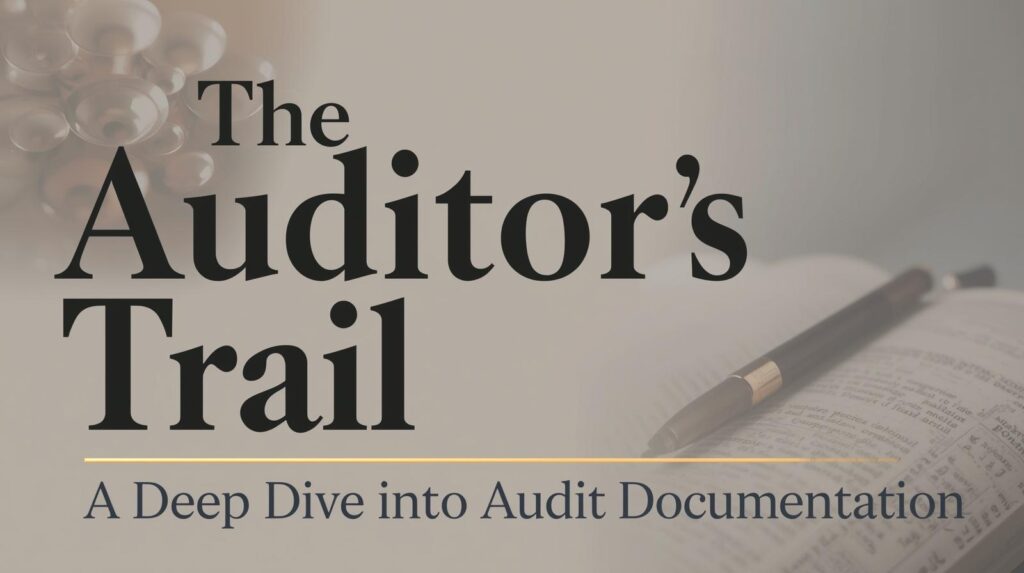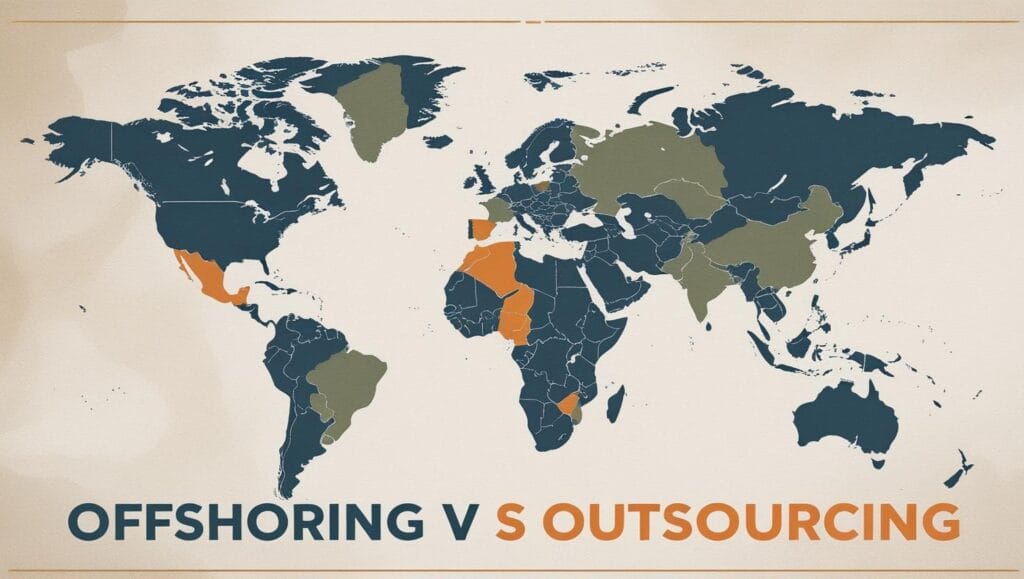A U.S. Professional’s Guide to International Accounting Standards (IFRS)
In today’s hyper-connected global economy, business is no longer confined by borders. Capital flows freely, companies operate multinationally, and investors seek opportunities worldwide. But how does an investor in Chicago compare a company based in Berlin with one in Tokyo? The answer lies in a shared financial language: International Accounting Standards. This guide offers a comprehensive overview for U.S. professionals on what these standards are, why they matter, and how they stack up against our own U.S. GAAP.
What Are International Accounting Standards?
International Accounting Standards (IAS), and their modern successors, International Financial Reporting Standards (IFRS), are a single set of high-quality, globally accepted accounting principles. Think of them as the “English” of financial reporting—a common language designed to make business transparent and comparable across the globe.
These standards are developed and maintained by the International Accounting Standards Board (IASB), an independent, not-for-profit organization based in London. The IASB’s primary objective is to create standards that bring transparency, accountability, and efficiency to financial markets around the world. By having one set of rules, the IASB aims to:
- Foster Trust: When financial statements are prepared using the same rules, investors and other stakeholders have more confidence in the information they receive.
- Promote Economic Efficiency: A single standard helps investors identify opportunities and risks across the globe, lowering the cost of capital and reducing international reporting costs for businesses.
- Enhance Comparability: It allows for “apples-to-apples” comparisons of company performance, regardless of where a company is headquartered.
“Our mission is to develop IFRS Standards that bring transparency, accountability and efficiency to financial markets around the world. Our work serves the public interest by fostering trust, growth and long-term financial stability in the global economy.”
— The IFRS Foundation
Today, over 140 jurisdictions, including the European Union, Canada, Australia, and Japan, require or permit the use of IFRS for publicly listed companies. This widespread adoption underscores their significance in the modern financial landscape. The United States, however, remains a notable exception, continuing to use its own set of standards.
Key Takeaways
- Common Language: IFRS serves as a universal rulebook for financial reporting.
- Governing Body: The International Accounting Standards Board (IASB) creates and manages IFRS.
- Global Adoption: Over 140 countries use IFRS, making it the dominant standard globally.
- Core Goal: To increase transparency, comparability, and efficiency in global financial markets.
The Big Debate: IFRS vs. U.S. GAAP
For any U.S.-based accountant, executive, or investor, the central discussion around international standards inevitably leads to a comparison with our own system: the U.S. Generally Accepted Accounting Principles (U.S. GAAP). While both IFRS and GAAP share the same fundamental goal of providing accurate and reliable financial information, their philosophical approaches and specific rules can differ significantly.
Principles vs. Rules: The Core Philosophical Divide
The most crucial distinction between IFRS and U.S. GAAP lies in their fundamental approach:
- IFRS is “Principles-Based”: IFRS provides a broad framework with limited specific guidance. It requires accountants to use their professional judgment to interpret the principles and apply them to transactions. The idea is to capture the economic substance of a transaction over its legal form. This can offer more flexibility but also leads to less comparability in certain situations, as different interpretations are possible.
- U.S. GAAP is “Rules-Based”: U.S. GAAP is far more prescriptive and detailed. It provides specific rules for a multitude of industries and transactions. For nearly every scenario, there’s likely a detailed rule to follow. This approach promotes consistency and comparability but can be rigid and may lead to “financial engineering” where companies structure transactions to achieve a desired accounting outcome (i.e., following the letter of the law, but not its spirit).
Think of it like building with LEGOs. IFRS gives you a picture of the final castle and a pile of bricks, encouraging you to use your judgment to build it. U.S. GAAP gives you a step-by-step instruction manual with detailed diagrams for every single connection. Both methods can result in a castle, but the process and the final nuances will be different.
Key Technical Differences
Beyond the philosophical divide, several key technical differences exist. Understanding these is critical for anyone analyzing financial statements from different jurisdictions.
| Area of Accounting | IFRS (Principles-Based) | U.S. GAAP (Rules-Based) |
|---|---|---|
| Inventory Valuation | Prohibits the use of the Last-In, First-Out (LIFO) method. Allows First-In, First-Out (FIFO) and weighted-average cost. | Permits the use of LIFO, FIFO, and weighted-average cost. LIFO is widely used in the U.S. for its tax benefits during inflationary periods. |
| Revaluation of Assets | Allows for the revaluation of property, plant, and equipment (PP&E) and intangible assets to fair value. Increases are reported in equity; decreases are expensed. | Strictly prohibits revaluation of assets. Assets must be carried at historical cost, less accumulated depreciation/amortization. |
| Development Costs | Allows for the capitalization of certain internally generated development costs as an intangible asset if specific criteria are met (e.g., technical feasibility, intent to complete). | Requires most development costs to be expensed as incurred. Exceptions exist, such as for certain software development costs. |
| Impairment Losses | Uses a one-step approach. An asset is impaired if its carrying amount exceeds its “recoverable amount.” Impairment loss reversals are permitted under certain conditions. | Uses a two-step approach. First, test for impairment by comparing carrying value to undiscounted cash flows. Second, measure the loss by comparing carrying value to fair value. Reversals are prohibited. |
| Lease Accounting | IFRS 16 uses a single model for lessees, requiring nearly all leases to be recognized on the balance sheet with a “right-of-use” asset and a lease liability. | ASC 842 distinguishes between finance leases and operating leases for lessees. Both are on the balance sheet, but the expense recognition pattern in the income statement differs. |
Why Should U.S. Professionals Care About IFRS?
Even though the U.S. Securities and Exchange Commission (SEC) has not mandated IFRS for domestic public companies, its global prevalence makes it impossible to ignore. For American businesses and finance professionals, understanding IFRS is no longer optional—it’s a strategic necessity.
1. Foreign Investment and M&A
U.S. companies looking to acquire or merge with foreign entities will be dealing with financial statements prepared under IFRS. A deep understanding is required for proper due diligence, valuation, and post-merger integration. Misinterpreting IFRS financials can lead to overpaying for an acquisition or failing to identify critical risks.
2. Access to Global Capital
A U.S. company seeking to list on a foreign stock exchange, such as the London Stock Exchange or Hong Kong Stock Exchange, may be required to report under IFRS. This broadens access to international investors and can be a strategic move for global expansion.
3. Working for a Multinational Corporation
Many large U.S.-based multinationals (like Coca-Cola or P&G) have subsidiaries all over the world that report locally under IFRS. The parent company’s accounting team must be adept at converting these IFRS-based financials to U.S. GAAP for consolidation. This requires bilingual accountants fluent in both standards.
4. The Path to Convergence
For years, the IASB and the U.S. Financial Accounting Standards Board (FASB) have worked on projects to converge their standards. While full adoption seems unlikely in the near term, this collaboration has already narrowed many differences (e.g., in revenue recognition with ASC 606 and IFRS 15). The trend is toward greater alignment, making knowledge of IFRS increasingly relevant. The future accountant will need to be well-versed in both sets of standards.
The Future of Global Standards and the U.S. Position
The question of whether the U.S. will ever fully adopt IFRS is a complex one with powerful arguments on both sides.
Arguments for U.S. Adoption of IFRS
- Reduced Complexity: A single global standard would simplify accounting for U.S. multinationals and make their financials more easily comparable to their foreign competitors.
- Lower Costs: It would eliminate the significant costs associated with maintaining two sets of standards and reconciling between them.
- Enhanced Capital Flows: It could make U.S. markets even more attractive to foreign investors who are already familiar with IFRS.
Arguments Against U.S. Adoption of IFRS
- High Quality of U.S. GAAP: Proponents argue that U.S. GAAP is the “gold standard”—more rigorous, detailed, and trusted than IFRS. Why abandon a superior system?
- Sovereignty and Control: Adopting IFRS would mean ceding control of U.S. accounting standard-setting to the IASB, a foreign-based body. This is a significant political and regulatory hurdle.
- Enormous Transition Costs: The cost for U.S. companies, auditors, and universities to transition from GAAP to IFRS would be astronomical, involving changes to IT systems, training, and internal controls.
The current consensus points towards continued convergence rather than outright adoption. The FASB and IASB will likely keep working together to align their standards where it makes sense, creating a “better of both worlds” scenario. For now, U.S. professionals must operate in a dual-standard world, making cross-standard literacy a highly valuable skill.
Frequently Asked Questions (FAQ)
1. What is the difference between IAS and IFRS?
International Accounting Standards (IAS) were the original standards issued by the predecessor body to the IASB between 1973 and 2000. When the IASB was formed in 2001, it adopted the existing IAS and began issuing new standards under the name International Financial Reporting Standards (IFRS). Today, the complete set of standards is collectively referred to as IFRS, which includes both the new IFRS and the older IAS that are still in effect.
2. Is IFRS better than U.S. GAAP?
Neither standard is definitively “better”; they are just different. U.S. GAAP is considered more robust and rigorous (rules-based), which can lead to higher consistency. IFRS is more flexible and focused on economic substance (principles-based), which can better reflect the underlying economics of a transaction. The “better” standard often depends on the specific situation and the user’s perspective.
3. Will my small U.S.-based business ever need to use IFRS?
It’s unlikely for a purely domestic small business. IFRS primarily affects publicly listed companies and those operating internationally. However, if your business plans to seek investment from a foreign private equity firm, get acquired by a European company, or expand its operations overseas, you may encounter IFRS sooner than you think.
4. How can I learn more about IFRS?
The best resources are the official ones. The IFRS Foundation website offers access to the standards and educational materials. Major accounting firms (like Deloitte, PwC, EY, and KPMG) also publish extensive guides and comparisons between IFRS and U.S. GAAP that are invaluable for professionals.
Disclaimer
The information provided in this article is for educational purposes only and should not be considered as financial, accounting, or legal advice. The accounting standards landscape is complex and subject to change. Please consult with a qualified professional for advice tailored to your specific situation.

